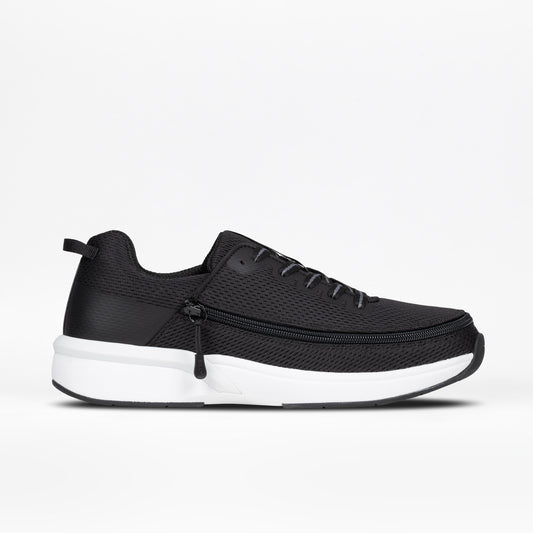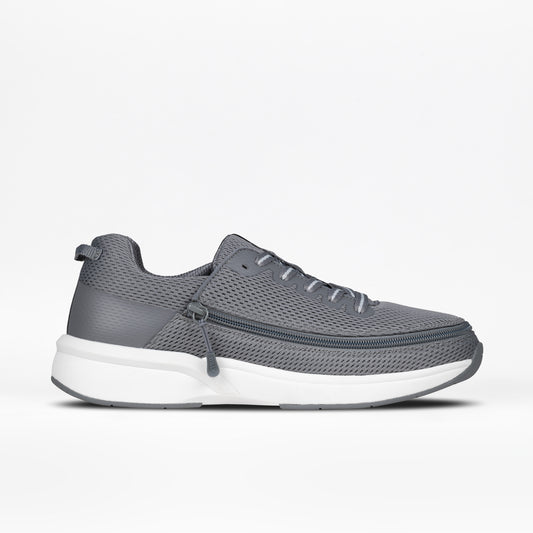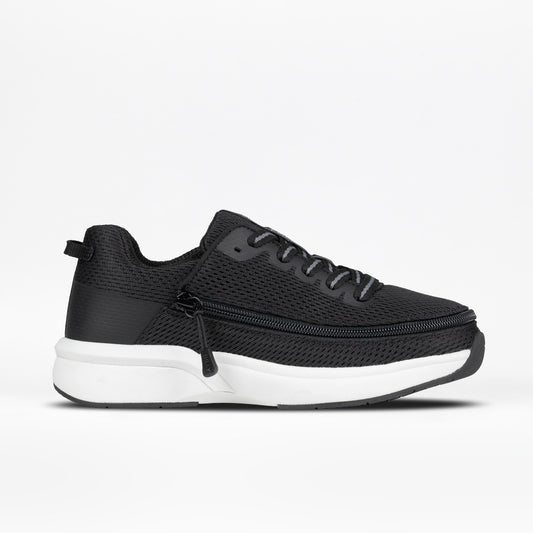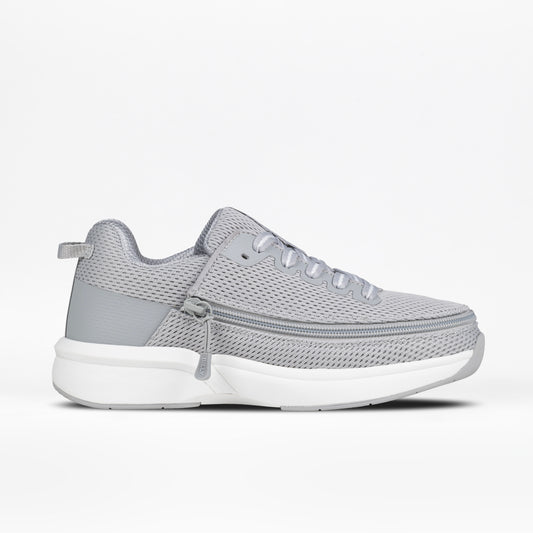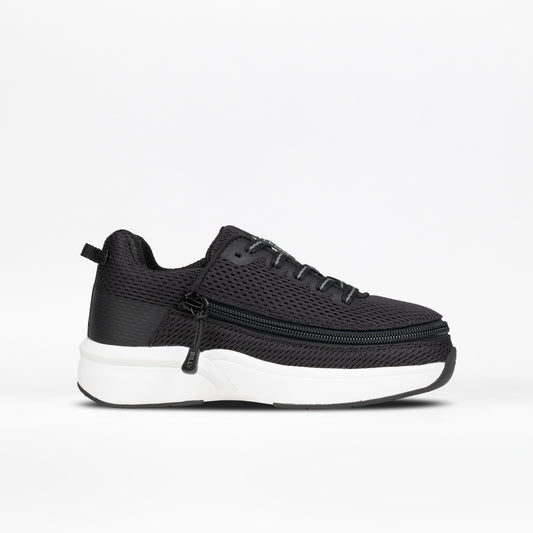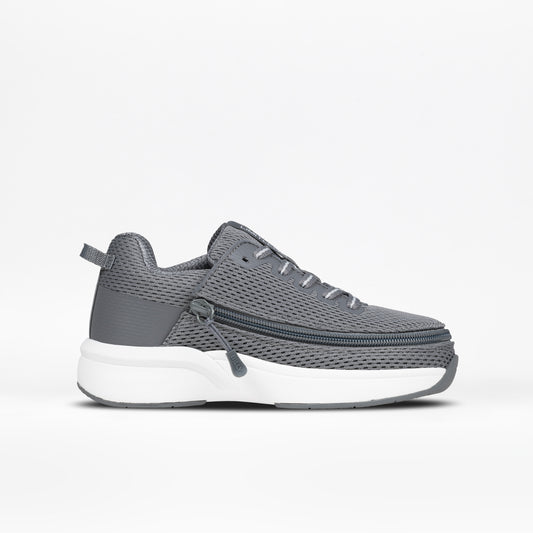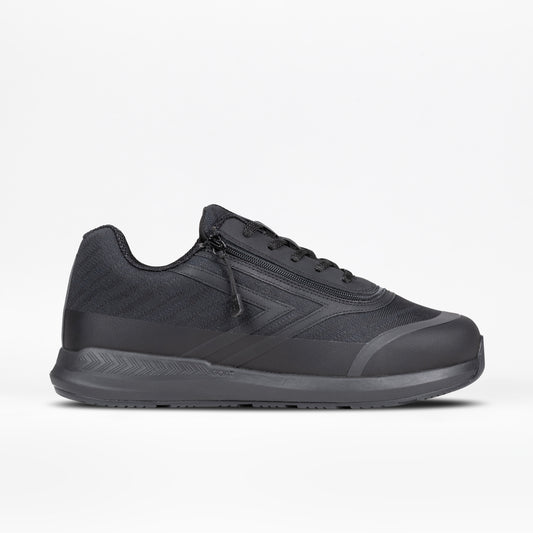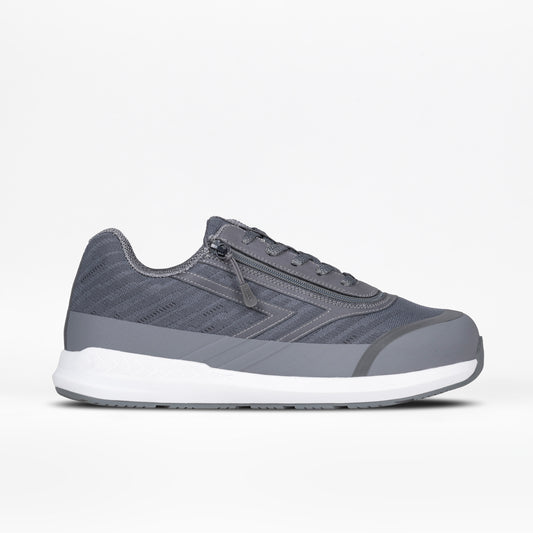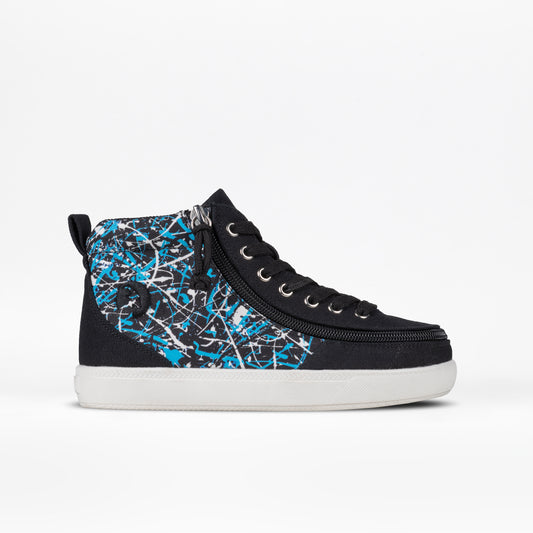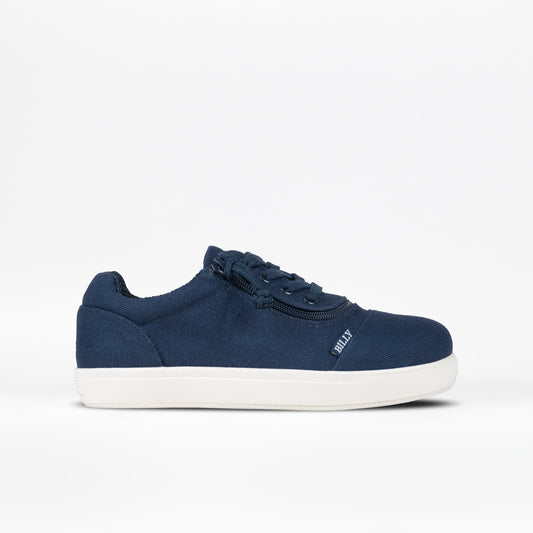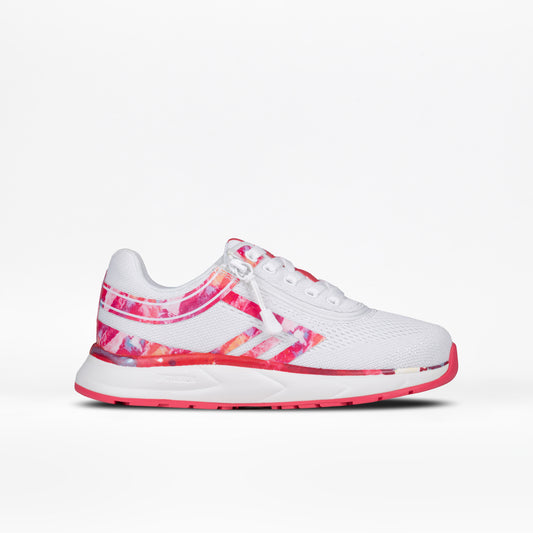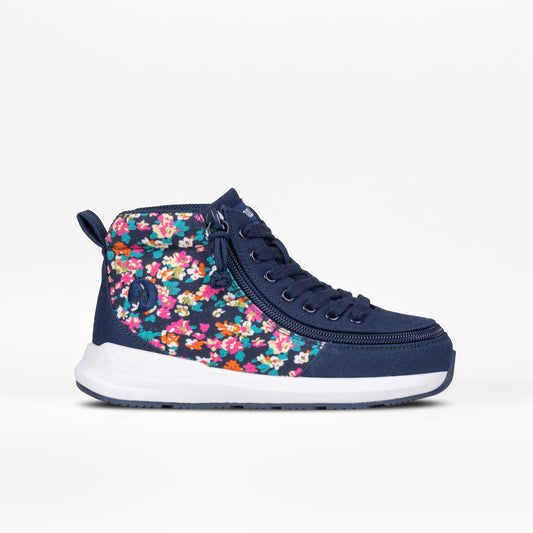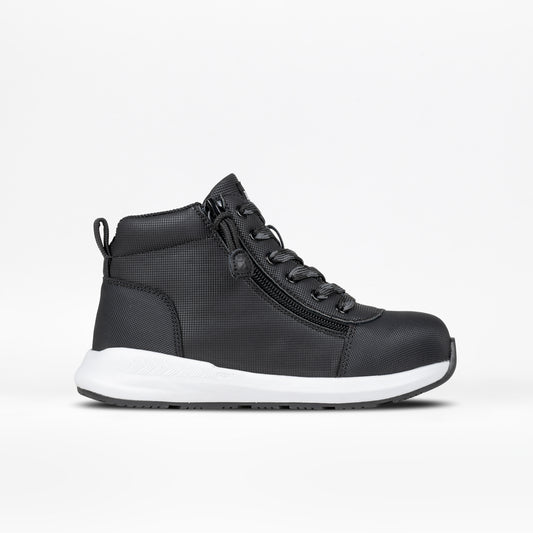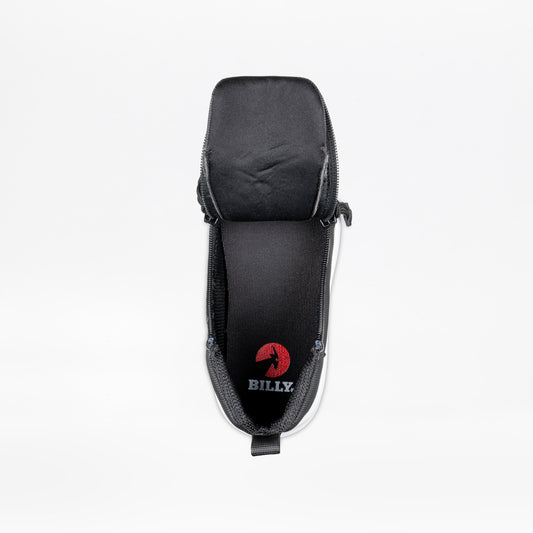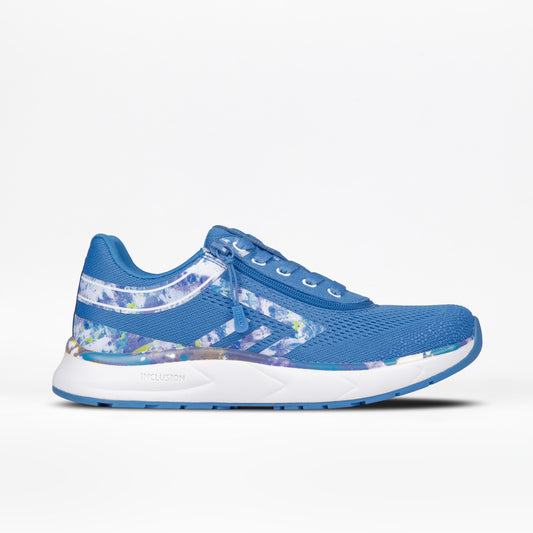
What does "PDAC Approved" mean for you and BILLY Footwear?
PDAC stands for Pricing, Data Analysis and Coding, and it is an approval process for the Centers for Medicare & Medicaid Services (CMS). When a shoe receives PDAC approval, it means it meets the strict standards required to be covered by insurance. Something to note though, while PDAC approval may qualify shoes for insurance coverage, eligibility depends on your medical diagnosis, a prescription from your treating physician, and compliance with Medicare’s documentation requirements. Private insurance coverage may also be available, so be sure to check with your provider for details.
For official Medicare guidelines, please visit Medicare.gov or call 1-800-MEDICARE.
We are very excited to have shoes with PDAC approval. For BILLY, this approval reinforces our commitment to making footwear that is both functional and inclusive without compromising style. It allows us to better serve our customers in the medical and orthopedic communities, including O&P clinics, DME providers, and beyond.
Acronym Soup
Who's who and what's what?
What is the HCPCS?
HCPCS (Healthcare Common Procedure Coding System) is a standardized coding system used in the U.S. for billing and reporting medical procedures, services, and supplies to Medicare, Medicaid, and other insurance programs.
Level II consists of alphanumeric codes developed by the Centers for Medicare & Medicaid Services (CMS) to represent products, supplies, and services.
Who is CMS?
CMS stands for Centers for Medicare & Medicaid Services. It is a federal agency within the Department of Health. Its main goal is to ensure beneficiaries have access to high-quality healthcare, while working to improve the overall health care system by setting quality standards, managing payments, and encouraging efficiency and effectiveness.
CMS plays a central role in the creation, maintenance, and administration, of HCPCS codes.
What is a HCPCS code?
A HCPCS code is a standardized alphanumeric code used in the medical field to report procedures, products, and services for billing and claims processing, particularly for Medicare and Medicaid.
The PDAC contractor, reporting to CMS, verifies whether a product qualifies for an existing HCPCS code.
What is PDAC?
PDAC stands for Pricing, Data Analysis, and Coding (PDAC). The PDAC contractor is hired by CMS (Centers for Medicare & Medicaid Services). The role of the PDAC contractor is to help suppliers and manufacturers correctly code Durable Medical Equipment, Prosthetics, Orthotics, and Supplies (DMEPOS) items for Medicare billing.
The PDAC contractor is responsible for verifying which codes apply to products, then maintain the Durable Medical Equipment Coding System (DMECS), an online database of verified products.
What does "PDAC Approved" mean?
PDAC approved means that a product — typically a Durable Medical Equipment, Prosthetic, Orthotic, or Supply (DMEPOS) item—has been formally reviewed and verified by the Pricing, Data Analysis, and Coding (PDAC) contractor to ensure it matches a specific HCPCS Level II code used for Medicare billing.
It also means the following:
- The product has been assigned a specific HCPCS code that accurately reflects its function and design.
- The product meets Medicare’s standards for reimbursement.
- The product meets Medicare’s quality, durability, and functionality standards, adding credibility and trust for healthcare providers and patients.
- The product is published on the PDAC website via the Durable Medical Equipment Coding System (DMECS), typically used by billing teams and Medicare Administrative Contractors to verify coding.
Collapsible content
HCPCS Code A5500 definition
The HCPCS A5500 code refers to a specific classification used by Medicare for off-the-shelf therapeutic shoes for persons with diabetes.
A5500 Code Definition: This is used for diabetic shoes that are off-the-shelf depth-inlay shoes designed to accommodate multi-density inserts.
To be assigned the A5500 code, a shoe must:
- Include a full-length, heel-to-toe filler that, when removed, provides at least 3/16” of additional depth to accommodate custom-molded or customized inserts.
- Be made of high-quality material.
- Have a closure system.
- Be available in full and half sizes, with at least three widths, and the sole must be graded to match the size and width of the upper part of the shoe.
These specifications ensure that the shoes meet the therapeutic needs of diabetic patients, particularly those at risk for foot ulcers or other complications.
Collapsible content
HCPCS Code L3202 definition
The HCPCS L3202 code applies to children’s shoes available in multiple widths, with a removable insole (sock liner), specifically designed to provide additional depth for orthotics or inserts.
This code is part of the Healthcare Common Procedure Coding System (HCPCS) and is used for custom-molded orthopedic footwear designed specifically for children. These shoes incorporate supination or pronation correction features, which help manage foot deformities or gait abnormalities.
Key Characteristics of L3202 Footwear:
- Custom-molded design: Tailored to the child’s foot using a mold or impression.
- Therapeutic purpose: Used to offload pressure, correct alignment, and protect against complications from conditions like: diabetes, neuropathy, plantar fasciitis, and musculoskeletal disorders.
- Supinator/Pronator features: Built-in components to correct inward or outward rolling of the foot.
- Child-specific sizing: Tailored for pediatric patients, typically in sizes ranging from toddler to youth.
- Clinical use: Often prescribed by podiatrists or orthopedists as part of a broader treatment plan that may include physical therapy or orthotic devices.
PDAC approved shoes with code L3202 (Kids' & Toddler sizing)
Collapsible content
HCPCS Code L3203 definition
The HCPCS L3203 code applies to junior-sized shoes available in multiple widths, with a removable insole (sock liner), specifically designed to provide additional depth for orthotics or inserts.
This code is part of the Healthcare Common Procedure Coding System (HCPCS) and is used for custom-molded orthopedic footwear designed for junior-sized patients (typically older children or adolescents) who require therapeutic footwear due to medical conditions affecting foot alignment or structure.
Key Characteristics of L3203 Footwear:
- Custom-molded design: Tailored to the foot using a mold or impression.
- Therapeutic purpose: Used to offload pressure, correct alignment, and protect against complications from conditions like: diabetes, neuropathy, plantar fasciitis, and musculoskeletal disorders.
- Supinator/Pronator features: Built-in components to correct inward or outward rolling of the foot.
- Junior sizing: Specifically tailored for youth, bridging the gap between child and adult sizes.
- Orthotic function: Often used in conjunction with other orthotic devices or as part of a broader treatment plan.
PDAC approved shoes with code L3203 (Kids' sizing)
Collapsible content
HCPCS Code L3206 definition
The HCPCS L3206 code applies to children’s high top shoes available in multiple widths, with a removable insole (sock liner), specifically designed to provide additional depth for orthotics or inserts.
This code is part of the Healthcare Common Procedure Coding System (HCPCS) and is used to describe a custom-fitted orthopedic footwear designed for children who require supination or pronation correction due to medical conditions affecting foot structure or gait.
Key Features of L3206 Footwear:
- High top design: Provides additional ankle support.
- Supinator/Pronator components: Built-in features to correct foot alignment issues such as inward (pronation) or outward (supination) rolling.
- Child-specific sizing: Tailored for pediatric patients, typically in sizes ranging from toddler to youth.
- Orthotic function: Often used in conjunction with other orthotic devices or as part of a broader treatment plan.
Clinical Use Cases
L3206 shoes are prescribed for children with:
- Congenital foot deformities
- Neuromuscular disorders
- Post-surgical recovery
- Diabetes-related foot complications
- Structural abnormalities like flat feet, clubfoot, or toe walking
They can help:
- Improve gait and posture
- Prevent further deformity
- Reduce pain and discomfort
- Support mobility and balance
Collapsible content
HCPCS Code L3207 definition
The HCPCS L3207 code applies to junior-sized high top shoes available in multiple widths, with a removable insole (sock liner), specifically designed to provide additional depth for orthotics or inserts.
This code is part of the Healthcare Common Procedure Coding System (HCPCS) and is used to describe a custom-fitted orthopedic footwear designed for junior-sized patients (typically older children or adolescents) who require therapeutic footwear due to medical conditions affecting foot alignment or structure.
Key Features of L3207 Footwear:
- High top design: Provides additional ankle support.
- Supinator/Pronator components: Built-in features to correct foot alignment issues such as inward (pronation) or outward (supination) rolling.
- Junior sizing: Specifically tailored for youth, bridging the gap between child and adult sizes.
- Orthotic function: Often used in conjunction with other orthotic devices or as part of a broader treatment plan.
L3207 shoes are prescribed for children with:
- Congenital foot deformities
- Neuromuscular disorders
- Post-surgical recovery
- Diabetes-related foot complications
- Structural abnormalities like flat feet, clubfoot, or toe walking
They can help:
- Improve gait and posture
- Prevent further deformity
- Reduce pain and discomfort
- Support mobility and balance
Collapsible content
HCPCS Code L3215 definition
The HCPCS L3215 code applies to women’s shoes available in multiple widths, with a removable insole (sock liner), specifically designed to provide additional depth for orthotics or inserts. It is part of the Healthcare Common Procedure Coding System (HCPCS) and is typically used for billing and reimbursement purposes under Medicare and other insurance plans.
Key Features of L3215 Footwear:
- Style: Oxford-style shoe (low-cut, lace-up).
- Gender-specific: Designed specifically for women.
- Orthopedic function: Intended to accommodate foot deformities, structural abnormalities, or therapeutic needs.
- Use case: Often prescribed for patients with conditions such as diabetes, arthritis, bunions, hammertoes, neuropathy, and post-surgical recovery.
PDAC approved shoes with code L3215 (Women's sizing)
-
Women's Sport Inclusion
Regular price From $ 59.99 USDRegular priceUnit price per$ 100.00 USDSale price From $ 59.99 USDSale -
Women's Limitless
Regular price $ 170.00 USDRegular priceUnit price per$ 170.00 USDSale price $ 170.00 USD
Collapsible content
HCPCS Code L3216 definition
The HCPCS L3216 code applies to women’s shoes available in multiple widths, with a removable insole (sock liner), specifically designed to provide additional depth for orthotics or inserts. It is part of the Healthcare Common Procedure Coding System (HCPCS) and is typically used for billing and reimbursement purposes under Medicare and other insurance plans.
Key Features of L3216 Footwear:
- Gender-specific: Designed specifically for women.
- Depth inlay: Provides additional depth to accommodate custom or prefabricated orthotic inserts.
- Orthopedic function: Intended to accommodate foot deformities, structural abnormalities, or therapeutic needs.
- Use case: Often prescribed for patients with conditions such as diabetes, arthritis, bunions, hammertoes, neuropathy, and post-surgical recovery.
PDAC approved shoes with code L3216 (Women's sizing)
-
Women's Sport Inclusion
Regular price From $ 59.99 USDRegular priceUnit price per$ 100.00 USDSale price From $ 59.99 USDSale -
Women's Limitless
Regular price $ 170.00 USDRegular priceUnit price per$ 170.00 USDSale price $ 170.00 USD
Collapsible content
HCPCS Code L3219 definition
The HCPCS L3219 code applies to men’s shoes available in multiple widths, with a removable insole (sock liner), specifically designed to provide additional depth for orthotics or inserts. It is part of the Healthcare Common Procedure Coding System (HCPCS) and is typically used for billing and reimbursement purposes under Medicare and other insurance plans.
Key Features of L3219 Footwear:
- Gender-specific: Designed for male patients.
- Orthopedic function: Intended to accommodate foot deformities, structural abnormalities, or therapeutic needs.
- Use case: Often prescribed for patients with conditions such as diabetes, arthritis, bunions, hammertoes, neuropathy, and post-surgical recovery.
PDAC approved shoes with code L3219 (Men's sizing)
-
Men's Limitless
Regular price $ 170.00 USDRegular priceUnit price per$ 170.00 USDSale price $ 170.00 USD
Collapsible content
HCPCS Code L3221 definition
The HCPCS L3221 code applies to men’s shoes available in multiple widths, with a removable insole (sock liner), specifically designed to provide additional depth for orthotics or inserts. It is part of the Healthcare Common Procedure Coding System (HCPCS) and is typically used for billing and reimbursement purposes under Medicare and other insurance plans.
Key Features of L3221 Footwear:
- Gender-specific: Designed for male patients.
- Depth inlay: Provides additional depth to accommodate custom or prefabricated orthotic inserts.
- Orthopedic function: Intended to accommodate foot deformities, structural abnormalities, or therapeutic needs.
- Use case: Often prescribed for patients with conditions such as diabetes, arthritis, bunions, hammertoes, neuropathy, and post-surgical recovery.
PDAC approved shoes with code L3221 (Men's sizing)
-
Men's Goat
Regular price $ 150.00 USDRegular priceUnit price per$ 150.00 USDSale price $ 150.00 USD -
Men's Limitless
Regular price $ 170.00 USDRegular priceUnit price per$ 170.00 USDSale price $ 170.00 USD
Collapsible content
HCPCS Code L3222 definition
The HCPCS L3222 code applies to men’s high top shoes available in multiple widths, with a removable insole (sock liner), specifically designed to provide additional depth for orthotics or inserts. It is part of the Healthcare Common Procedure Coding System (HCPCS) and is typically used for billing and reimbursement purposes under Medicare and other insurance plans.
Key Features of L3222 Footwear:
- Gender-specific: Designed for male patients.
- High Top design: Provides additional ankle support.
- Depth inlay: Provides additional depth to accommodate custom or prefabricated orthotic inserts.
- Orthopedic function: Intended to accommodate foot deformities, structural abnormalities, or therapeutic needs.
- Use case: Often prescribed for patients with conditions such as diabetes, arthritis, bunions, hammertoes, neuropathy, and post-surgical recovery.
PDAC approved shoes with code L3222 (Men's sizing)
-
Men's CS High
Regular price From $ 90.00 USDRegular priceUnit price per$ 90.00 USDSale price From $ 90.00 USD -

 Sale
SaleMen's Kodify CS High
Regular price From $ 59.99 USDRegular priceUnit price per$ 90.00 USDSale price From $ 59.99 USDSale
Collapsible content
HCPCS Code L3224 definition
The HCPCS L3224 code applies to women’s shoes available in multiple widths, with a removable insole (sock liner), specifically designed for use as part of an orthopedic brace system. This code is used for billing orthopedic shoes for women that are specifically designed to be used as part of a brace system. These shoes are not standard therapeutic footwear but are considered an integral component of an orthosis, meaning they are medically necessary when prescribed as part of a bracing system.
Key Features of L3224 Footwear:
- Gender-specific: Designed for women.
- Brace integration: Must be used in conjunction with a leg brace or orthotic device.
- Custom or prefabricated: Can be either, but must meet PDAC criteria for brace integration
PDAC approved shoes with code L3224 (Women's sizing)
-
Women's Sport Inclusion
Regular price From $ 59.99 USDRegular priceUnit price per$ 100.00 USDSale price From $ 59.99 USDSale -
Women's Limitless
Regular price $ 170.00 USDRegular priceUnit price per$ 170.00 USDSale price $ 170.00 USD

